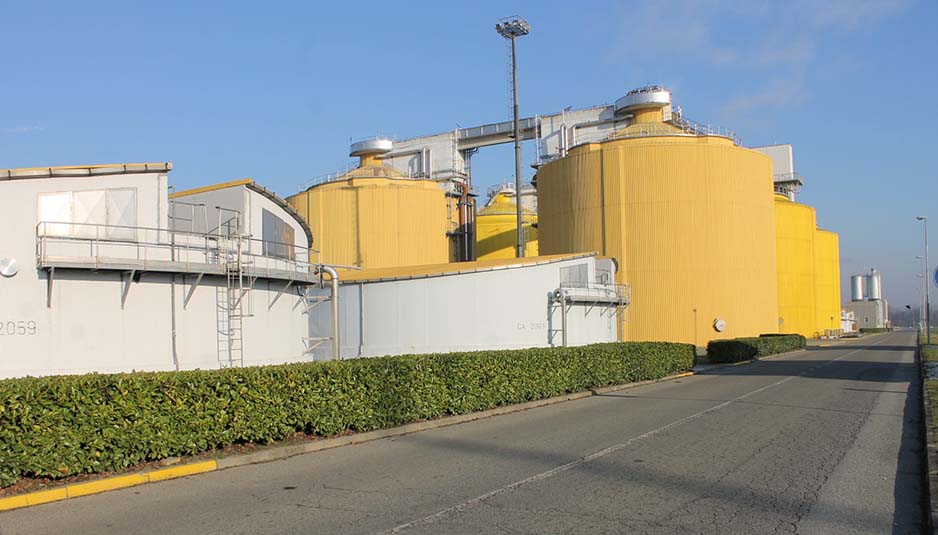Energy from Wastewater: SOFCOM project
Professor Santarelli explains as the main pillar of the project is “make productive, from the energetic point of view, a necessary process: the waste-water depuration”.

The six-million-euros European project SOFCOM, financed by the European Commission through FCH JU agency, has as main coordinator the Polytechnic Institute of Turin and has more than ten-different-countries academic and business partners. The coordinator of the project and professor at Polytechnic Institute of Turin Massimo Santarelli has explained the main idea and pillar of the project, which is “make productive, from the energetic point of view, a necessary process: the waste-water depuration”. Last 27th of March SOFCOM has ended and has been publicly presented the demonstrator realized thanks to the project by SMAT (Metropolitan Water Society of Turin). I have met one of the responsible of the maintenance section and intern of SOFCOM: Massimo Salemi, who allowed to a short interview in order to understand better everything about the plant.
Good Morning Mr. Salemi. Could you please briefly describe us how the prototype, built thanks to the SOFCOM project, worked during the last four years?
The demonstrator installed by SMAT has two main sections: the first one uses the biogas produced by the wastewater treatment plant in order to produce high efficiency electric energy (almost 53% of electric efficiency), high enthalpy heat recovery (available heat at 400 °C); the second section uses the produced CO2 in order to cultivate micro-algae through a photo-bioreactor.
This kind of plant utilizes a SOFC-based system and, for this reason, it needs to a high quality gas, with no polluting substances in it. That is possible using several filters in order to remove siloxanes and H2S upstream the overall process. The clean biogas is mixed with steam according to the reforming process (with the goal of reach an appropriate chemical compositions) and, then, sent to the SOFC, which is able to generate 1.9 electric kW of power. At this stage of the process, there is the treatment of exhaust gases (carbon oxide, hydrogen, water and CO2). A combustor burns all the hydrogen and the carbon oxide; meanwhile, the remaining gas has cooled down and has sent to the condensation process in order to remove all the water.
The pure CO2 from the first part of the process goes to the second section of the plant: the PBR (PhotoBioReactor), a developing technology which is however present in the market since years. In the PBR enters the water from the treatment part of the plant; that water is rich of nutrients and it is mixed with the produced carbon dioxide. This process is characterized by a continuous recirculation and close system in pipes configuration in which the water passes through sun-exposed pipes, the ideal chemical-physical conditions in order to cultivate micro-algae.
The main advantages of SOFCOM are:
- The fuel we use is from the anaerobic digestion of waste muds coming from the treatment of sewer wastewater of Turin.
- Emission reduction because we need to remove any polluting substances upstream the process, otherwise the fuel cells could not work.
- CO2 absorbing by the PBR, which avoids, even if is a small amount, the emission in the atmosphere.
- An additional step of wastewater purification.
- The presence of micro-algae: a resource that could be used for different goals.
What is your role in SOFCOM?
I participated to the project in the concluding part. My job right now is about the PBR data management and analysis and the system’s maintenance. My role in SMAT is also the laboratory data analysis of any kind of samples from the plant and data analysis from PBR’s sensors.
What were the most challenging hurdles you have met during your work, according to your experience?
Several European partners participated to the SOFCOM project. Each plant’s section has been designed and built singularly. The assembly stage has come later. Thanks to that, any business and academic partners have given an important help through their competences; on the other hand, this kind of plants has many complexities due to the managing of several systems at the same time. SOFCOM plant (and its systems) is not an industrial plant “keys in hand” and, therefore, could happen to replace valves because of the weather, solve any kind of problems due to the data transmission from sensors to the server, etc.
What outcomes do you expect from SOFCOM in the technological, environmental and economic field if you succeed to make this technology scalable and economically sustainable?
In my opinion, the future progressions of the first part of the plant are more than good. From an economic point of view those kind of systems start to be competitive for small/middle size applications (if we benchmark them to the micro-CHP, for example). They are characterized by the huge advantage of low polluting emissions, especially in this period in which laws and directives are even more pressing about pollution.
On the other hand, I have personally observed that the PBR technology is not completely “mature”. A lot of PBR’s test have been made in laboratories in monitored conditions in order to verify its technical feasibility. Moreover, I guess, it will develop faster than we could think. In the whole world, in fact, there are thousands of experiments about how to optimize this kind of process (e.g. working on the shape).
Header image credits: areeweb.polito.it
